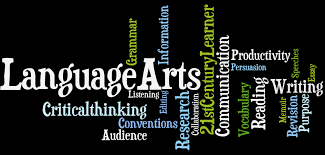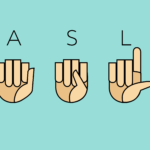During my time in observational practicum I found it very helpful to see how different teachers approached Language Arts. I also enjoyed seeing Language Arts strategies and activities that we had discussed in class in action. For example, I witnessed three different classes engaging in literature circles when studying a novel. I saw grade 4, 5, and 6 using this method of learning strategy. I personally think that literature circles provide students with a great opportunity to develop a stronger connection and understanding of a text. In the grade 4 class I observed using this activity, each group was at a different level and as such were required to read and do different work. I liked how this set up allowed for students to have the best chance of success in this unit and allowed them to progress at a natural pace to them. Due to this the teacher was better able to track students’ improvements in their learning and progression with the novel. I discussed this form of grouping with the teacher who told me that dividing the class into these varying groups has helped increase the students; interactions with their novels. She also touched on how collaborating with each other has helped to create a stronger sense of support, respect, and community in the class as a whole. In a grade 6 class I observed a creative writing activity that I really liked. The teacher split the class into small groups and had each group go to a different section of the whiteboard that had a word, object, or short sentence written there. The groups were then required to create descriptive sentences that included these words. After each group cycled through each section, the teacher read out their work to the entire class. While the teacher did this, he commented on what he liked and provided feedback to some that needed some extra help in tweaking. I thought that this activity provided a great way to have students engaged in creative writing and improving their skills in this area with collaborating of classmates. It was apparent too that the students were eager to create unique sentences that their teacher would appreciate. I also liked how this activity took an area of writing that the students were struggling with in their work as a whole and brought it into a whole class activity to develop these skills. In this same class the teacher also read aloud a chapter of the classes’ novel study book while students followed along with their own copies. At the end of this reading the teacher would engage students in a class discussion about aspects of the novel such as predictions of what will happen next, or if they agreed with some characters’ choices, etc. I think that reading aloud to students is an important activity that should not just be undergone in the early primary years. Reading aloud a chapter of a novel study book also helps to keep students up to, at the very least, the bare minimum of required reading material. This also helps to keep some students more engaged with the material as some find reading difficult on their own. It was clear to me that in almost all the classrooms that I observed Language Arts being taught that the incorporation of the six components of the subject, being listening, speaking, reading, writing, viewing, and visually representing, were all being touched on and incorporated. This inclusion of these components allows students to form strong understandings and relationships with the work they are engaging in and the information they are receiving. This also plays into the fact that there is not one correct way to teach Language Arts, and that each students’ style of learning is unique to them. Due to this it is important for Language Arts teachers to provide opportunities of choice and an array of teaching methods and lessons to best support their students’ success. Being able to participate in these observational practicums was incredibly helpful and provided a lot of insight to how a successful Language Arts classroom is run.

September 25, 2020
Observational Practicum: Reflections in English Language Arts
sydneyb
Administrator
Posts by sydneyb
-

Ed 491: Final Practicum Reflection
April 9, 2021
-

Inquiry-Based Project: The Effects of American Sign Language in Accompaniment of Second Language Learning
April 7, 2021
-

Article Review: Personalizing Learning Through Project-Based Learning
April 5, 2021
-

#OneWord2021 . . . Present
January 4, 2021
-

Exploring Fine Art through Inquiry: Indigenous Artist Spotlight
October 20, 2020